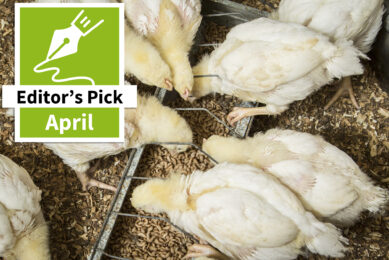Is biodiversity the future of farming?
More extreme weather conditions, as part of emerging climate change will make it difficult for farmers to sustain highly specialized cropping systems which require relatively stable climates. Farming systems that are less energy intensive, more flexible in the face of unstable climates, and that produce more different products could be the answer, according to Fred Kirschenmann from Iowa State University.
A few farmers already operate successful under this theory. One is Takao
Furuno’s duck/fish/rice/fruit farm in Japan. He produces duck meat, duck eggs,
fish meat, fruit, and rice without any purchased outside inputs. He uses a
highly synergistic system of production on the same acreage where he previously
only produced rice.
And, in this new system, his rice yields have increased
up to 50% over previous yields from an energy-intensive rice monoculture.
Numerous animal species
Joel Salatin, of Polyface Farms near
Swoope, Virginia USA has developed a rotational grazing production system
featuring pastures containing at least 40 varieties of plants and numerous
animal species.
Salatin’s farm uses little fossil fuel, yet the farm is
highly productive. The 57-hectare farm annually produces 30,000 dozen eggs,
10,000 to 12,000 broilers, 100 beef animals, 250 pigs, 800 turkeys, and 600
rabbits.
A US study by George Boody and colleagues has calculated that
diverse, synergistic farms can be profitable and simultaneously benefit the
environment. They showed that when farms are converted from corn/soybean
monocultures to more diverse operations, net farm income can increase by as much
as 108% while generating significant environmental and social benefits.
Principles
Principles that might guide post-modern farms are
almost completely different from those ‘used’ in today’s commercial farming.
According to Fred Kirschenmann the new multi species/multi crop farms
should:
• Be energy conserving
• Feature both biological and genetic
diversity
• Be largely self-regulating and self-renewing
• Be knowledge
intensive
• Operate on biological synergies
• Employ adaptive
management
• Feature ecological restoration rather than choosing between
extraction and preservation
• Achieve optimum productivity by featuring
nutrient-density, and multi-product synergistic production on limited
acreage
The original article appeared in the Agronomy
Journal
To subscribe to the free AllAboutFeed newsletter click here.
Join 26,000+ subscribers
Subscribe to our newsletter to stay updated about all the need-to-know content in the feed sector, three times a week. Beheer
Beheer









 WP Admin
WP Admin  Bewerk bericht
Bewerk bericht